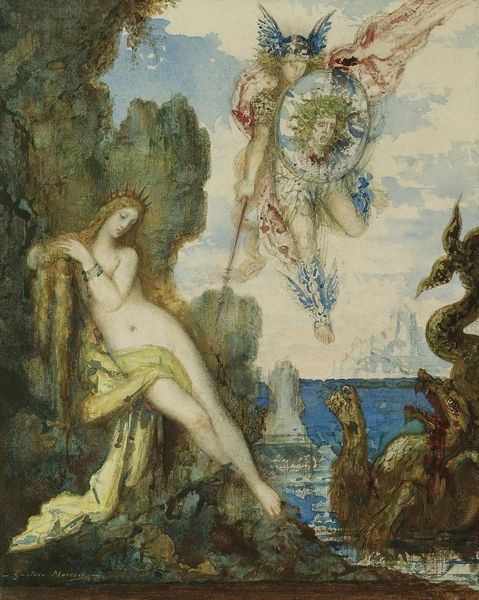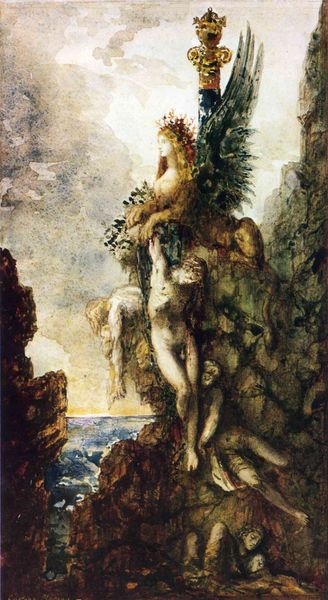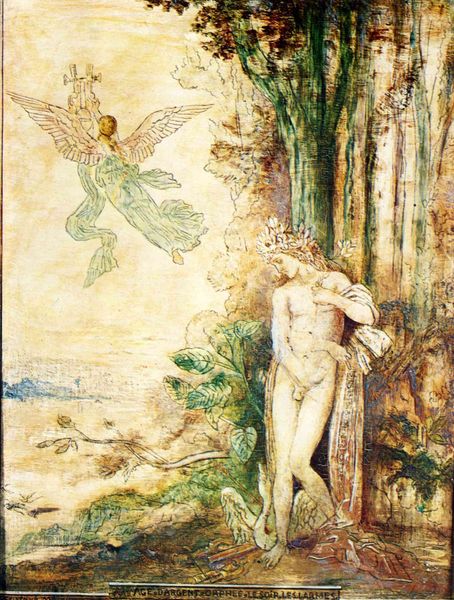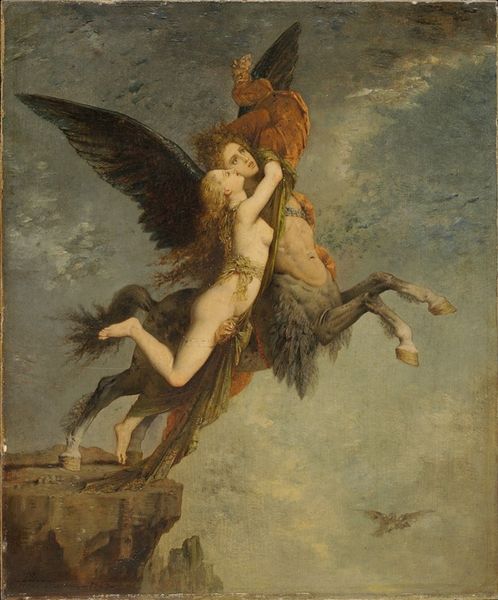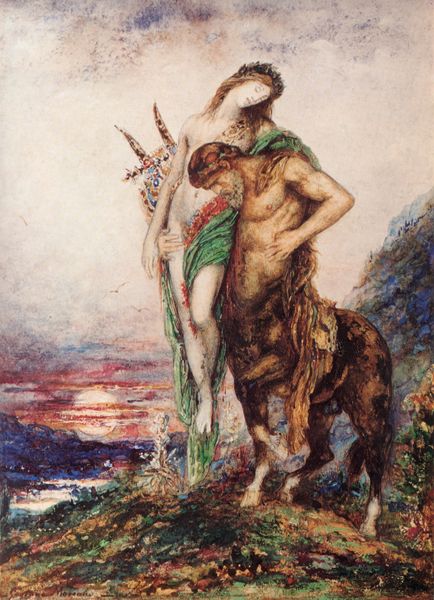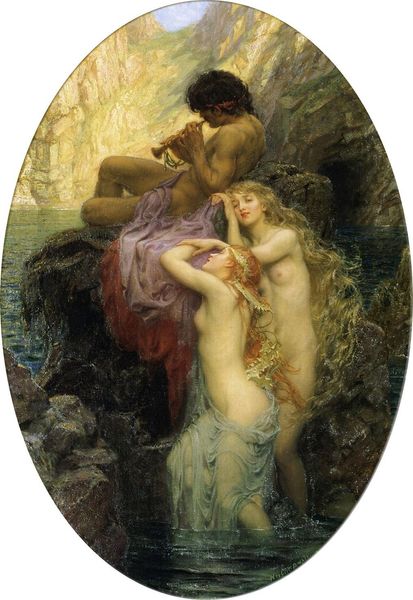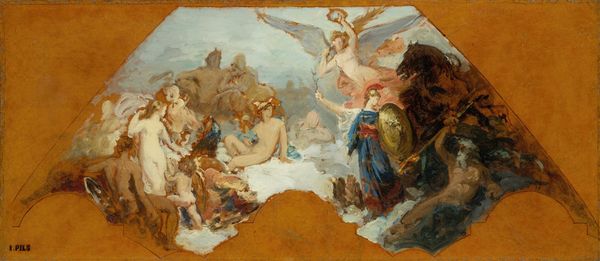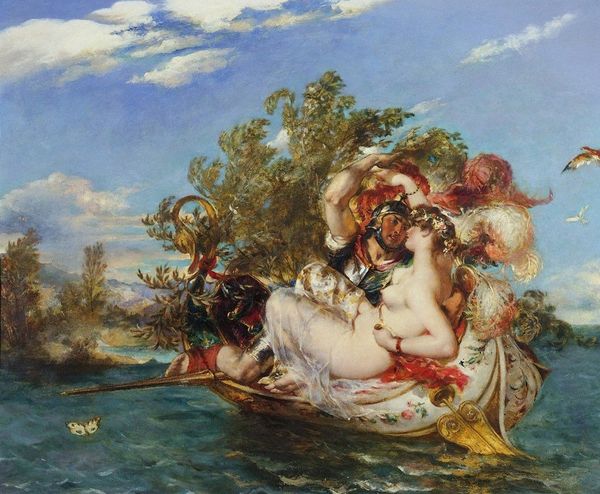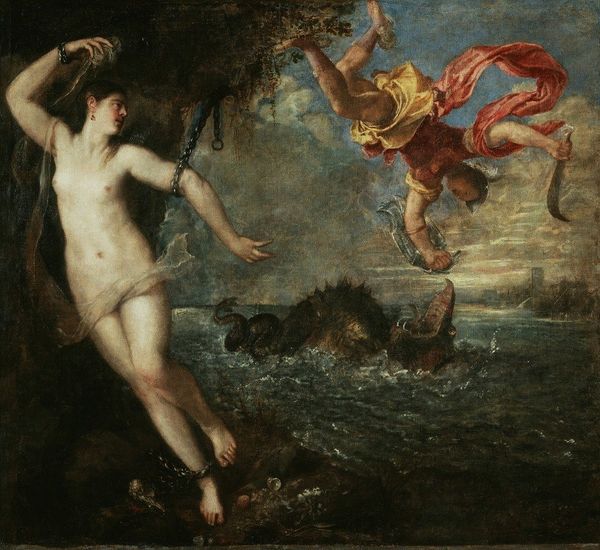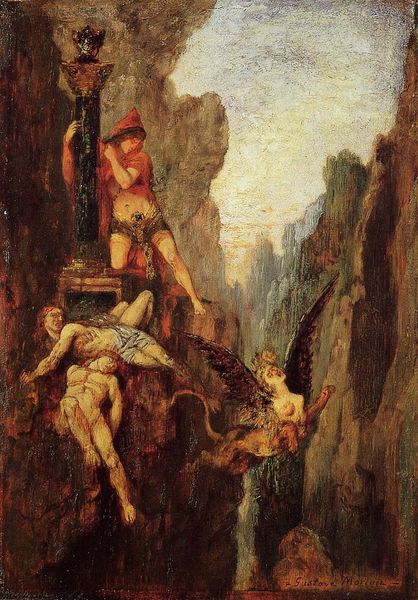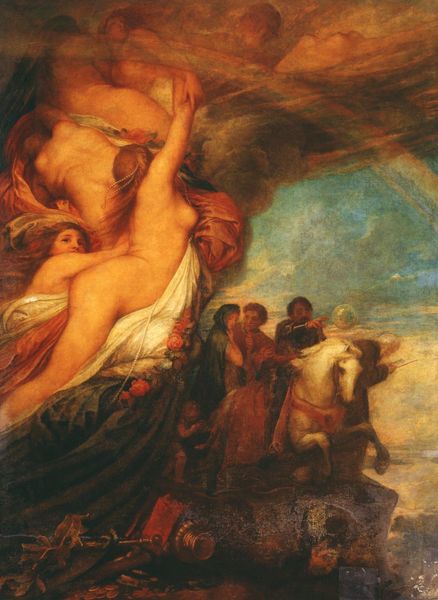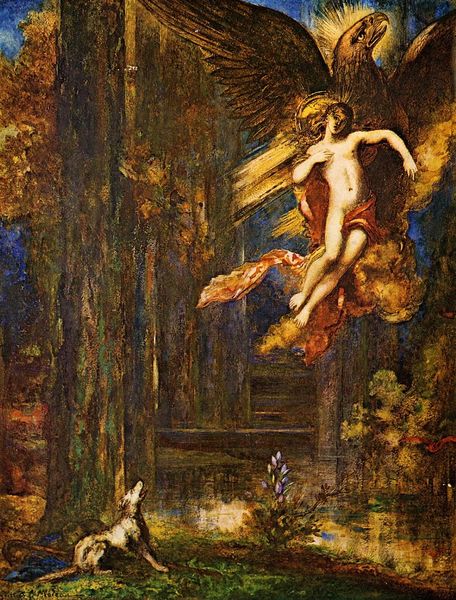
Copyright: Public domain
Curator: This is Gustave Moreau's "Hesiod and the Muse," painted around 1870. It currently resides in the Musée National Gustave Moreau in Paris. Editor: It feels…unfinished, almost dreamlike. The texture of the rock is so tactile, but the figures have a strange, ethereal quality. Curator: Moreau often played with these contrasts. His work sought to explore themes of inspiration and the artist's role in society. He certainly invites us to see the ways in which artistic labor is never an isolated undertaking. Editor: Absolutely. And consider Hesiod himself. He was a Boeotian shepherd who transformed into a celebrated poet. Moreau, a figure deeply immersed in a specific societal milieu, portrays Hesiod's rootedness and metamorphosis by pairing him with the Muse and a landscape of his own. Curator: Note the almost tactile materiality, the brushstrokes seemingly molded like clay, bringing an emphasis to the working conditions of a late 19th century painter's atelier and hinting to the manual labor, under precarious circumstances, for artistic innovation. The paint itself becomes a powerful medium. Editor: That’s interesting. I find Moreau so indicative of his historical moment—one grappling with faith, tradition, and the emerging modern world. What are these figures offering viewers searching for hope, when society appears disillusioned? The figures exist in an imaginative context, in that society needed to make sense of their time. The painting allows the intersection of myth and reality, prompting conversations around legacy and influence. Curator: Indeed. This piece reflects ongoing anxieties about artistic innovation, where tradition is constantly measured. The canvas becomes a material manifestation of those tensions, and we can observe this directly in the heavy impasto. Editor: The weight and materiality contrast sharply with the seeming lightness of the Muse. I would suggest viewers contemplate the nuances, the contrasts that show inspiration cannot thrive unless within the context of hard work. Curator: Reflecting on our discussion, I’m struck again by the painting’s ability to prompt a debate about our values and how we might honor artistic labour as the manifestation of a collective yearning. Editor: For me, the beauty here lies in recognizing how art becomes this bridge between historical discourse and future artistic endeavors.
Comments
No comments
Be the first to comment and join the conversation on the ultimate creative platform.
